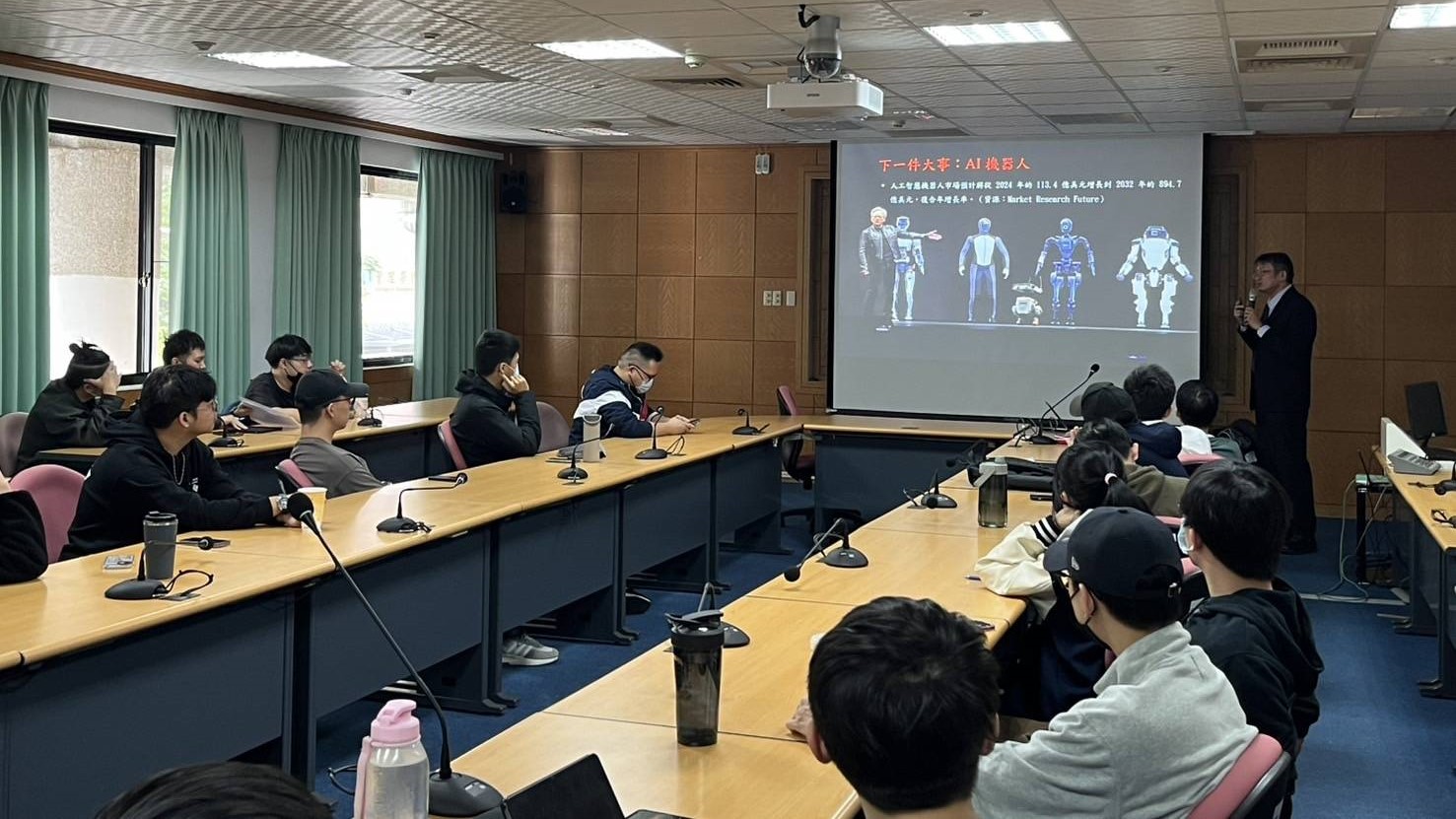
N&M's Chairman Rone Chiu Speaking at National Chung Cheng University. Picture/N&M offered
Recently, Rone Chiu, Chairman of Taiwan Nano & Micro-Photonics (N&M), was invited by Dr. Yeh Chih-Ting, Associate Professor of Mechanical Engineering at National Chung Cheng University, to deliver a keynote speech titled "The Present and Future of Silicon Photonics Sensing Combined with AI Applications." Rone shared his insights on emerging technologies and their profound impact on future lifestyles. Dr. Yeh praised N&M’s leadership in silicon photonics sensing and encouraged students to view the company as a role model, fostering innovation and laying a solid foundation for entrepreneurial success.
During his address, Rone referenced perspectives from NVIDIA CEO Jensen Huang and TSMC CEO C.C. Wei on the advancement of AI robots and drones. He highlighted that humanoid AI robots are poised to achieve ubiquity comparable to automobiles, with an economic scale to match, becoming essential partners in human life and reshaping global industries. Enhanced computational resources will continue to improve AI performance, unlocking new application scenarios for robots and drones.
Rone emphasized Taiwan’s robust IT manufacturing foundation and semiconductor talent pool as critical advantages. As AI robots and drones gain traction, Taiwan is well-positioned to capitalize on its semiconductor expertise, leading the AI revolution and driving the next economic boom.
According to market research, the AI robot market is projected to grow from $11.3 billion in 2024 to $89.5 billion by 2032, with a compound annual growth rate (CAGR) of 30%. Rone pointed out that while AI robots excel in vision, hearing, and touch, they lack olfactory and gustatory capabilities. By integrating silicon photonics sensing, these robots can gain a groundbreaking perceptual enhancement—a "Silicon Photonics Nose."
Equipped with olfactory sensing, AI robots could provide services such as home environment monitoring, fire safety, food quality inspection, and health monitoring. Silicon photonics sensors, particularly effective in detecting volatile organic compounds (VOCs), could open new frontiers in health applications.
Medical research has increasingly shown that exhaled human breath contains biomarkers for diseases. For example, specific gases have been linked to lung, breast, gastric, colorectal, and prostate cancers. Future research aims to identify additional disease-related gases, such as those associated with liver, esophageal, bladder, and pancreatic cancers. Silicon photonics sensing combined with AI could accelerate these breakthroughs, enabling earlier detection and treatment.
Taiwan Nano & Micro-Photonics’ silicon photonics sensing platform provides innovative solutions for AI’s olfactory perception and gas detection. Partnering with application developers, N&M aspires to establish a globally unique sensing ecosystem. By driving economic waves and contributing to a safer, more comfortable society, N&M is paving the way for a transformative future.